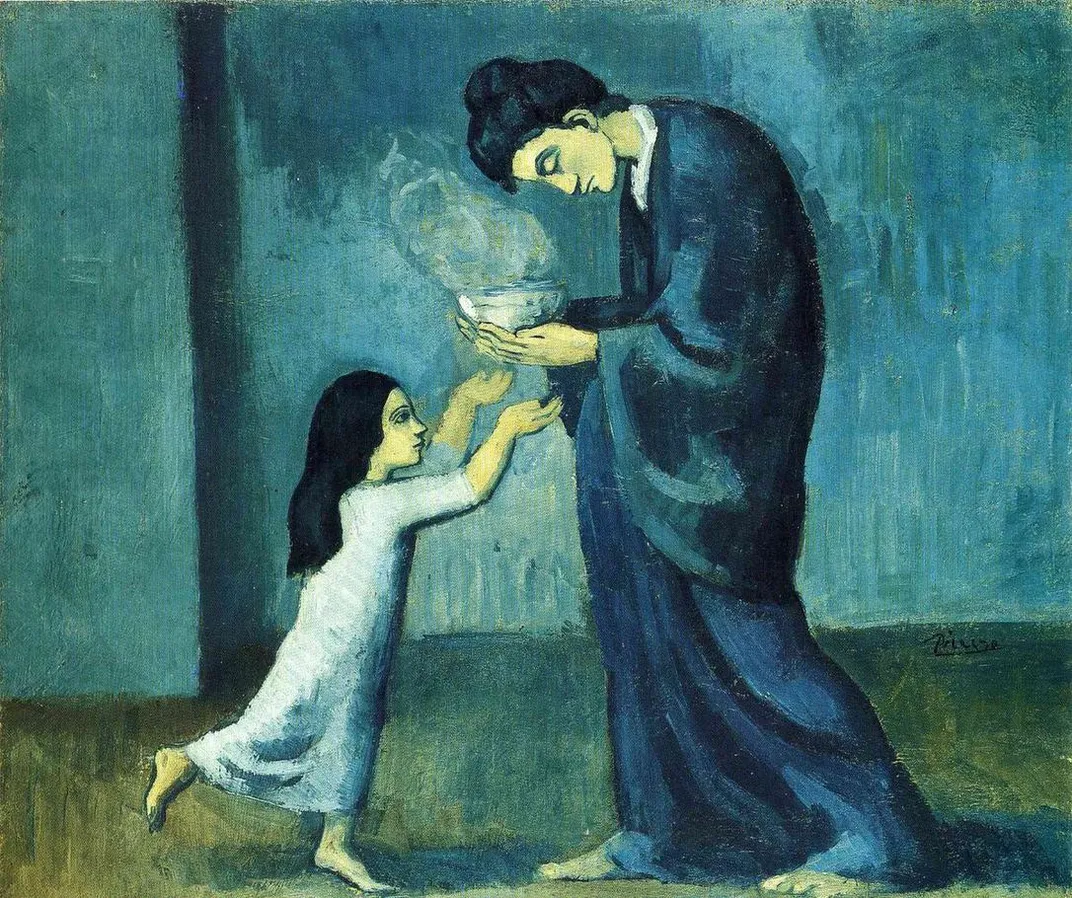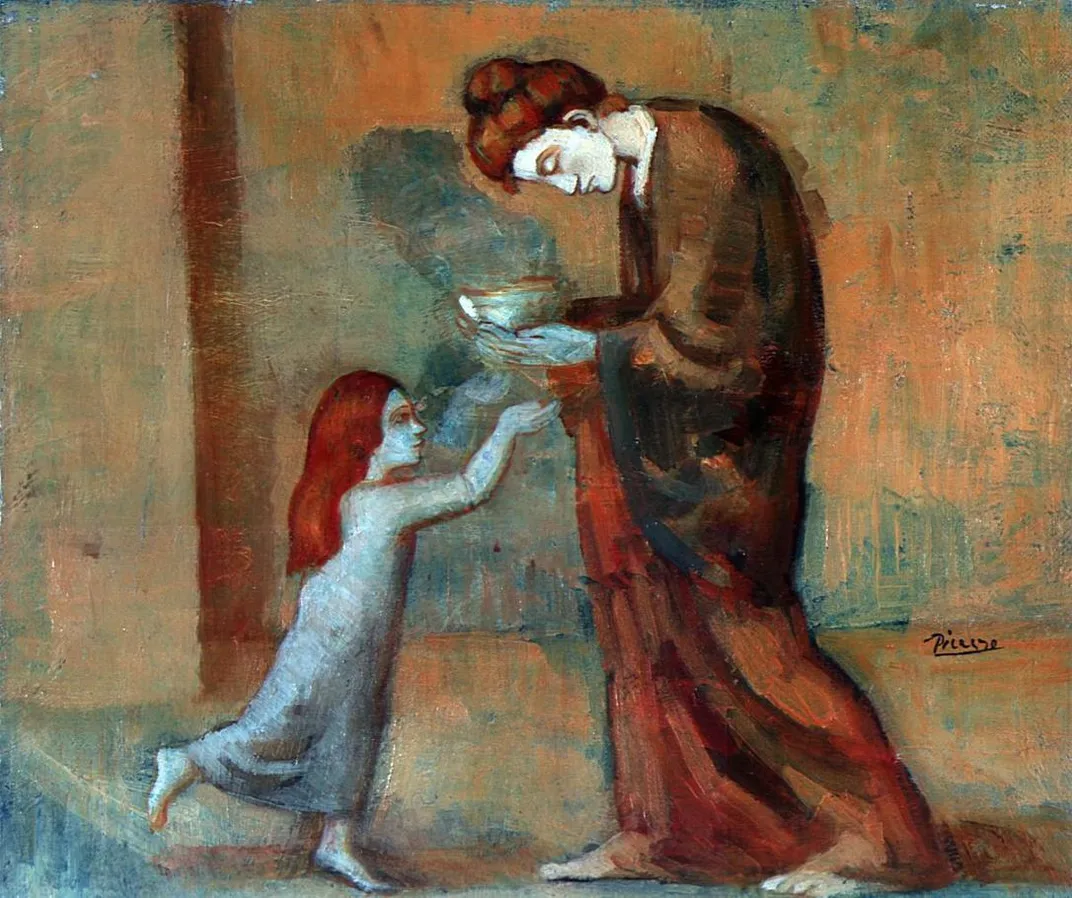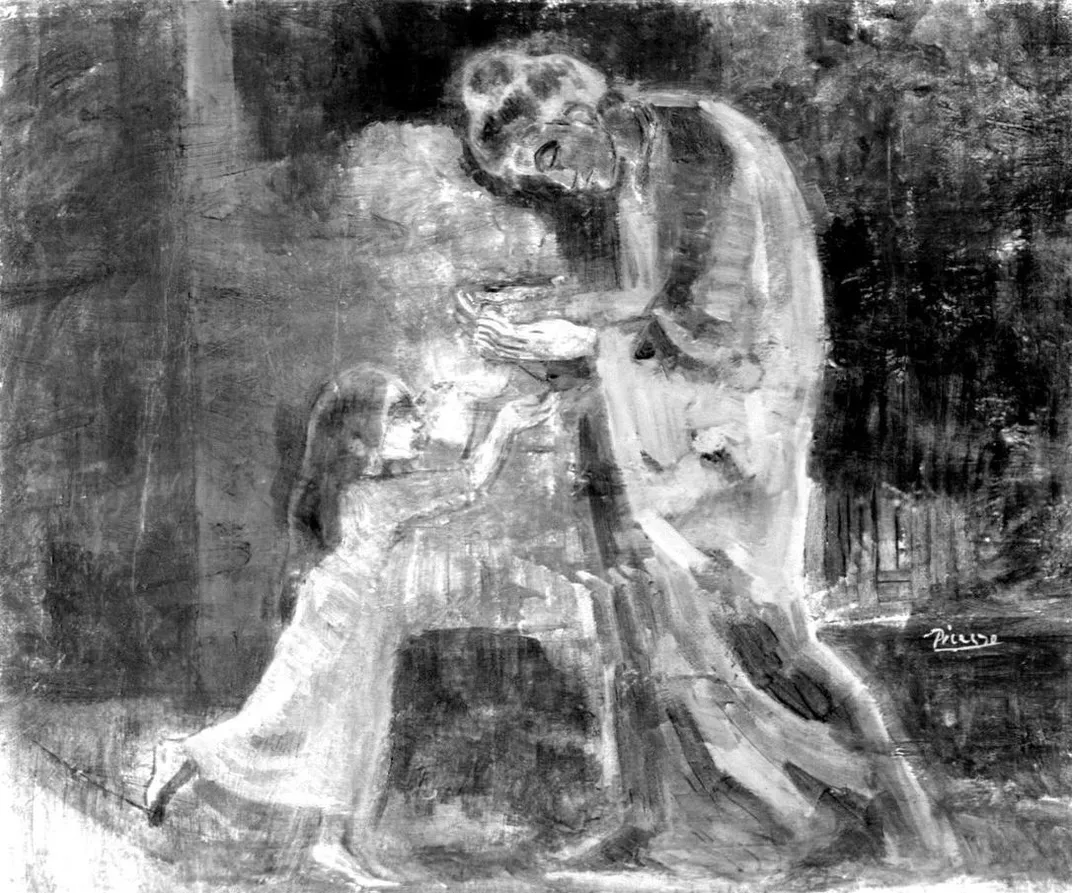High-Tech Scanning Shows Picasso’s Blue Period Evolution
A new study of “La Soupe” reveals it underwent as many as 13 layers of revision
It’s tempting to believe the figures in Picasso’s blue period painting “La Soupe” sprang from the artist’s mind fully formed.
Like dancers, each of their movements communicates a story. The woman’s body bends like a bow, her head prostrate, as she cradles a steaming bowl of soup in her hands. Meanwhile, the girl, her inverse, lifts her body up, her eyes raised, as she reaches her hands to meet the woman’s where they hang. Just who is gifting and receiving the soup is left open to interpretation.
In fact, getting to that final draft took work. Murray Whyte at The Toronto Star reports that new hyperspectral scanning shows that Picasso wrestled with the piece, adding and deleting figures and features, ultimately painting as many as 13 layers of revisions.
A study on the research was presented at the annual meeting of the American Institute for Conservation of Historic Artworks this June. According to a synopsis of the presentation, in preparation for a 2020 reassessment of Picasso’s blue period, the Art Gallery of Ontario decided to dig deeper, literally, into “La Soupe.” Partnering with imaging experts from several institutions, it subjected the painting to cutting-edge imaging techniques including diffuse hyperspectral infrared reflectography and traditional infrared reflectography.
The findings share stories almost as intriguing as the finished painting. “For a long time, it’s been clear that the thick textured paint of ‘La Soupe’ held secrets below,” Sandra Webster-Cook, senior painting conservator at AGO says in a press release. “We knew from the x-radiograph and even looking carefully with the naked eye that another painting had been scraped down before ‘La Soupe’ was painted. But exactly what was beneath the surface was a mystery. Thanks to sophisticated imaging and analysis, we’ve unlocked those secrets.”
Whyte reports that the scans show Picasso paying homage to his influences, then rejecting them in favor of his own style. For instance, the scan reveals that the first draft of the canvas included a woman with her back to the viewer, likely a nod to the artist Honoré Daumier's paintings of washerwomen in Paris. Picasso repurposed the outline of that first figure into the inner edges of the child and other remnants into the steam rising from the soup bowl.
The scans also show Picasso nodding to Greco-Roman classical style. While living in Paris, the artist had sketched the murals painted by the great Pierre Puvis de Chavannes for the Pantheon, which were directly inspired by Greco-Roman tradition. At one point, Picasso even included an amphora, used to hold wine or olive oil in ancient times, between the woman and child in “La Soupe” before deciding to paint over the heavy-handed symbol. The scans also show he made tweaks to the child’s head and foot, modified the woman’s hand holding the soup bowl and altered the color of the woman’s hair.
Previously, AGO put another blue period painting in its holdings, “La Miséreuse accroupie” through the same analysis. Reporting on the study in Februrary, Nicola Davis at The Guardian revealed that image of a crouching beggar woman also had a secret history. It began as a canvas depicting a hillside that had been painted by Picasso or one of his friends. The artist later transformed the outline of the hills into the beggar woman’s back. At one point, she held a piece of bread, too, which Picasso eventually painted over.
These new findings not only reveal the painter’s process during his early blue period, it also shows how his style developed during that critical time. “With everything [the researchers] were able to uncover, we’re really interested in unpacking that transition,” Kenneth Brummel, AGO’s assistant curator of modern art, tells Whyte. “It’s a very different painting from ‘La Miséreuse accroupie.’ The ritualized pose, the monumentality — how did he get there? How is he consolidating all of these ideas into this friezelike composition? It signals a shift in his style, and what Sandra and her colleagues have been able to uncover helps us explicate that transition. But really, it shows us how complicated the blue period is.”
Picasso’s blue period lasted from roughly 1900 to 1904. He painted primarily monochromatic works depicting scenes of beggars, prostitutes and the downtrodden, perhaps reflective of his own poverty and depression following the suicide of one of his friends. Though the blue period works weren’t commercially popular when they were created, many of them are now considered among the ranks of his greatest masterpieces, including “The Old Guitarist” and “The Blue Room.”


